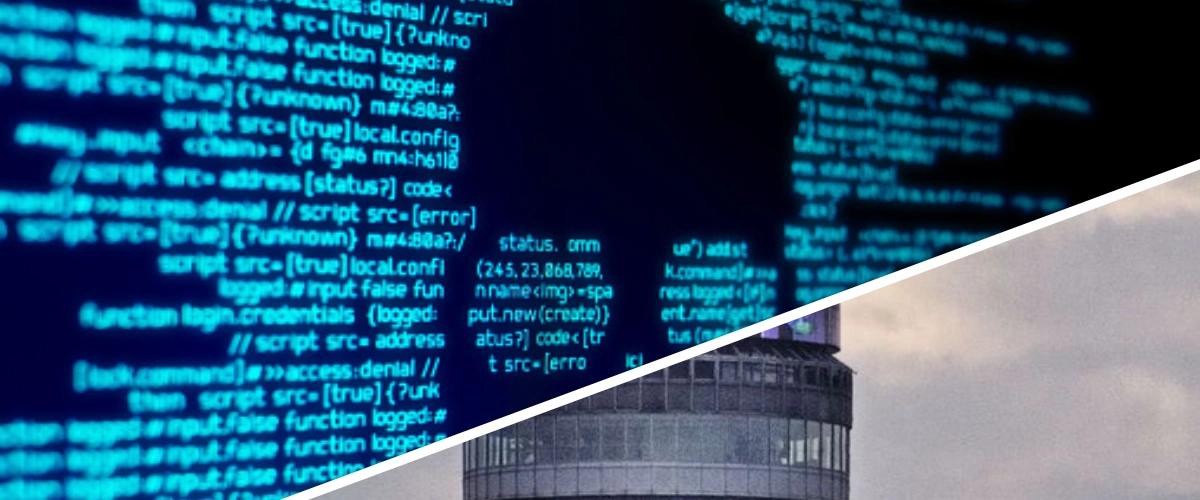The scale of cyberattacks on UK businesses and public services has reached alarming levels, according to new data released by British telecom giant BT. The company revealed that its systems log 2,000 signals of potential cyberattacks every second, amounting to around 200 million signals per day. This staggering figure highlights the increasing sophistication and frequency of online threats as businesses and institutions become more dependent on digital technologies.
Cyberattacks on the Rise

BT’s findings were shared at its Secure Tomorrow cybersecurity festival, held at the Adastral Park research centre, where experts underscored the critical importance of robust cybersecurity measures. The event came on the heels of the UK government’s decision to designate data centres as critical national infrastructure (CNI), emphasizing the need for greater protection against cyber threats from malicious actors, including hackers, organized crime, and hostile nation states.
The threat landscape is evolving rapidly. Web-connected devices, which are integral to modern business operations, are scanned over 1,000 times daily by known malicious sources, or once every 90 seconds, according to BT’s analysis. While some of these scans are legitimate—used for security monitoring—a significant portion (78%) are malicious, as cybercriminals search for vulnerabilities in systems across industries.
Rise in Automated Attacks
One of the most concerning trends is the increasing use of automated, disposable bots by cybercriminals. BT’s research showed a massive 1,234% rise in malicious internet protocol (IP) scanners in the 12 months leading up to July. These bots are programmed for “one-time use,” allowing attackers to evade existing security measures by continuously cycling through different IP addresses.
The most frequently targeted sectors include IT, defense, and financial services. However, cybercriminals are now expanding their focus to industries that were once considered less vulnerable, such as retail, education, and hospitality. As digital transformation accelerates across sectors, organizations that fail to implement comprehensive cybersecurity strategies are left exposed to increasingly sophisticated attacks.
AI’s Role in Cybersecurity—Both a Threat and a Solution
AI is playing a double-edged role in the evolving cybersecurity landscape. According to the National Cyber Security Centre (NCSC), AI will likely increase both the volume and the complexity of cyberattacks over the next two years. Ransomware threats are expected to grow as novice cybercriminals leverage AI-powered tools to carry out more advanced reconnaissance and launch targeted attacks.

On the other hand, AI also holds promise as a defense mechanism. BT’s Tris Morgan, Managing Director of Security, emphasized that AI-driven tools can help businesses detect and respond to threats in real-time, making them a critical part of modern cybersecurity infrastructure. “Tools like AI provide new routes of attack, but they can also be the first line of defense,” Morgan said. “At BT, we’re constantly evolving our network security to stay one step ahead and protect more than a million businesses, day in, day out.”
Businesses Struggling to Keep Up
Despite the rise in cyber threats, many UK companies are unprepared to deal with the growing risks. BT’s research indicates that while tech investment in UK businesses is expected to rise by 31% in 2024, a significant number of these organizations are upgrading systems and adding connected devices without adequately strengthening their cybersecurity frameworks. This lack of preparedness leaves them vulnerable to increasingly opportunistic and sophisticated cyberattacks.

Morgan likened the situation to burglars looking for an open window, with hackers continuously scanning networks for weaknesses. “Every 90 seconds hackers are checking connected devices to find a way in,” he said, warning that as businesses increase their digital footprints, the risk of a breach also rises.
Conclusion: Strengthening Cyber Defenses
As businesses continue to adopt new technologies and digital solutions, cybersecurity must remain a top priority. The insights shared by BT underscore the pressing need for organizations to not only invest in digital infrastructure but also to ensure that robust, AI-driven cybersecurity strategies are in place. With hackers becoming more sophisticated and the volume of attacks growing at an unprecedented rate, staying ahead of cybercriminals requires constant vigilance and innovation.
From my perspective, the rise in cyberattacks serves as a stark reminder that digital transformation cannot come at the expense of security. Businesses, both large and small, must recognize the evolving threat landscape and implement comprehensive security measures to protect their data, assets, and reputation. The future of digital business will depend on how well organizations can defend themselves against these ever-growing threats.






